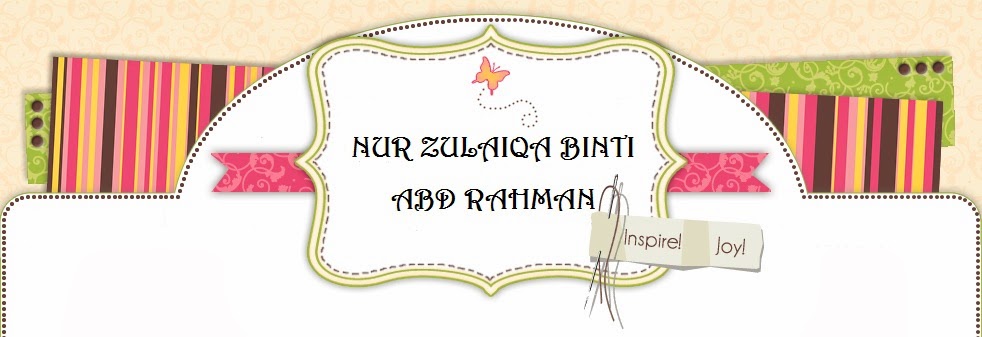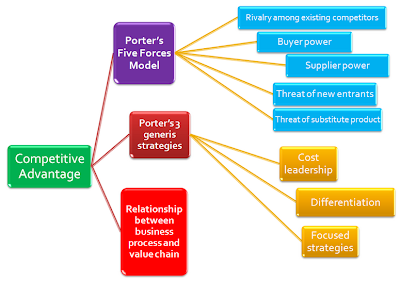Yellow….lets continue
with chapter TWO…
Lets start
like this…
Competitive Advantage

A product or service that an organization’s
customers place a greater value on than similar offerings from a competitor.

Competitive advantages are temporary because
competitors will keep duplicate the strategy. After then, the company should
create a new competitive advantage.
Porter’s 5 Forces Model
Michael Porter’s Five Forces Model is useful tool to aid
organization in challenging decision whether to join a new industry or industry
segment.
1. Rivalry among existing competitors.
· High – when competition is fierce in a
market
· Low – when competition is more
complacent
· Best Practices of IT:
a. Wal-mart and its suppliers using
IT-enabled system for communication and track product at aisles by effective
tagging system.
b. Reduce cost by using effective supply
chain.
· Existing competitors are not much of
the threat: typically each firm has
found its "niche".
· However, changes in management,
ownership, or "the rules of the game" can give rise to serious
threats to long term survival from existing firms .
2. Buyer Power
· High – when buyers have many choices
of whom to buy.
· Low – when their choices are few.
· To reduce buyer power (and create
competitive advantage), an organization must make it more attractive to buy
from the company not from the competitors.
· Best practices of IT-based :
ü
Loyalty program in travel industry (e.g. rewards
on free airline tickets or hotel stays )
3. Supplier Power
· High – when buyers have few choices of
whom to buy from.
· Low – when their choices are many.
· Best practices of IT to create
competitive advantage.
· E.g. B2B marketplace – private
exchange allow a single buyer to posts it needs and then open the bidding to
any supplier who would care to bid.
Reverse auction is an auction format in which increasingly lower bids.
4. Threat of Substitute Products and
Services
· High – when there are many
alternatives to a product or service.
· Low – when there are few alternatives
from which to choose.
· Ideally, an organization would like to
be on a market in which there are few substitutes of their product or services.
· Best practices of IT :
Electronic product -same function different
brands
5. Threat of new entrants
· High – when it is easy for new
competitors to enter a market.
· Low – when there are significant entry
barriers to entering a market.
· Entry barriers is a product or service
feature that customers have come to expect from organizations and must be
offered by entering organization to compete and survive.
· Best practices of IT
new bank must offers online paying
bills, account monitoring to compete.
Porter’s 3 Generics Strategies
1. Cost Leadership
·
Becoming a low-cost producer in the industry allows the company to lower
prices to
customers.
·
Competitors with higher costs cannot afford to compete with the low-cost
leader on
price.
2. Differentiation
·
Create competitive advantage by distinguishing their products on one or
more
features important to their customers.
·
Unique features or benefits may justify price differences and/or
stimulate demand.
3. Focused Strategy
·
Target to a niche market
·
Concentrates on either cost leadership or differentiation.
Relationship
between business process and value chain
- Supply
Chain - a chain or series of processes that adds value to product & service
for customer.
- Add
value to its products and services that support a profit margin for the firm
Diagram shows the SUPPLY CHAIN; a chain or series of processes that adds value
to product and services for customer.
Lets end your reading with Surah Al-Asr...
the end PEEpzz....
xoxo..muaahhh!















